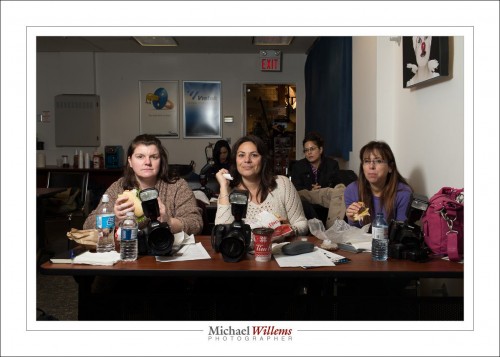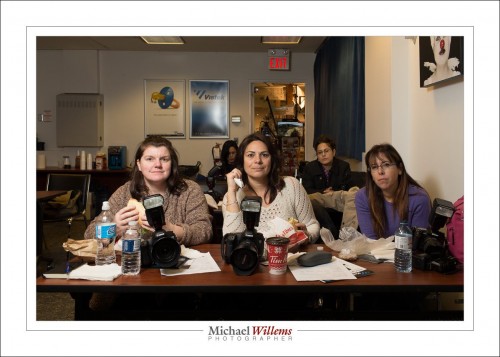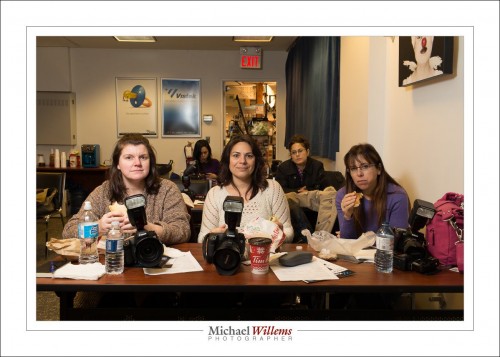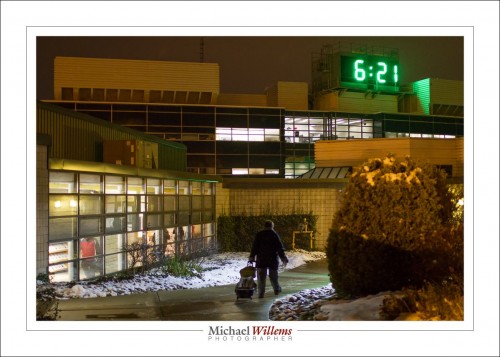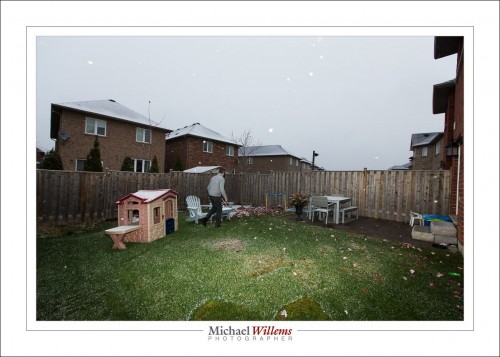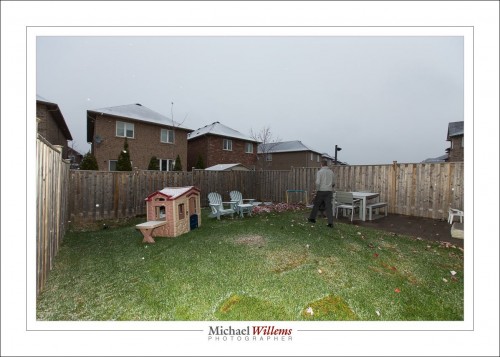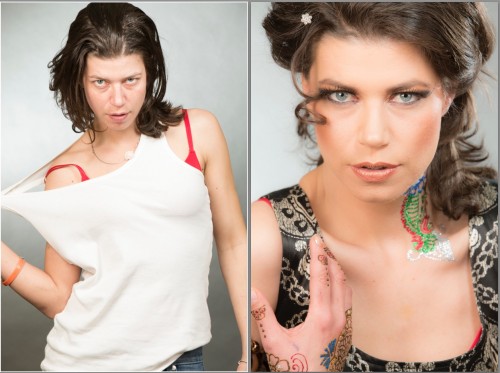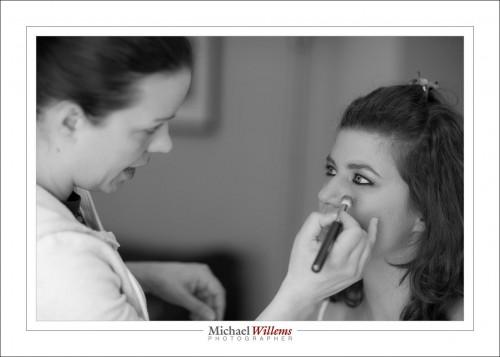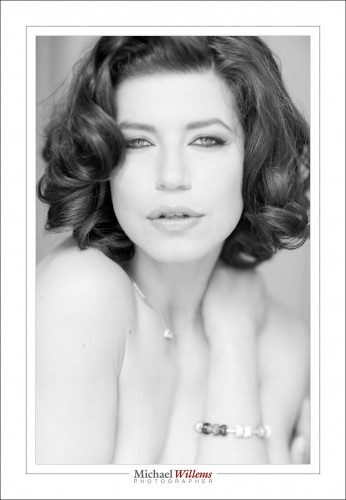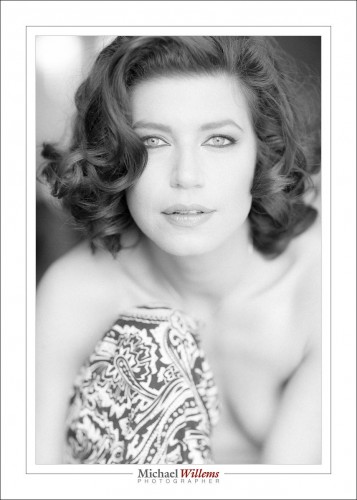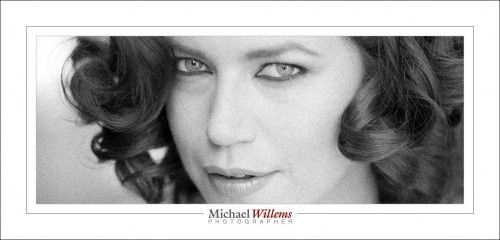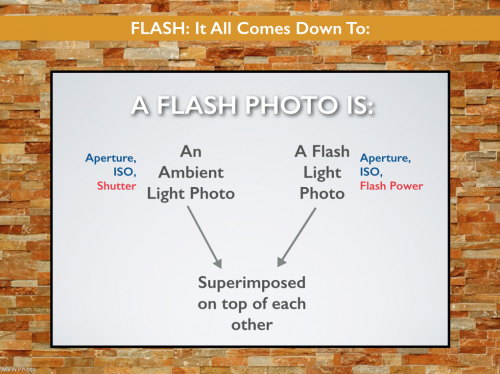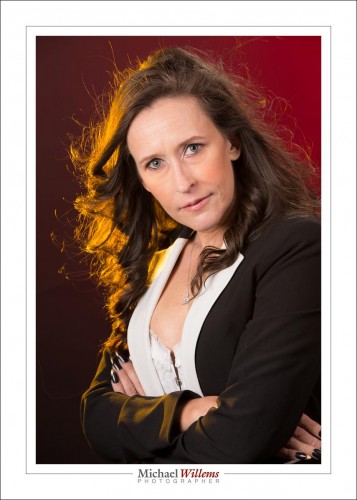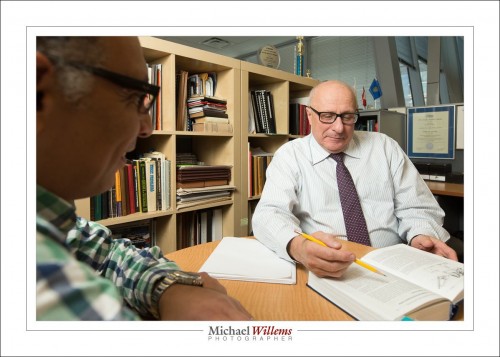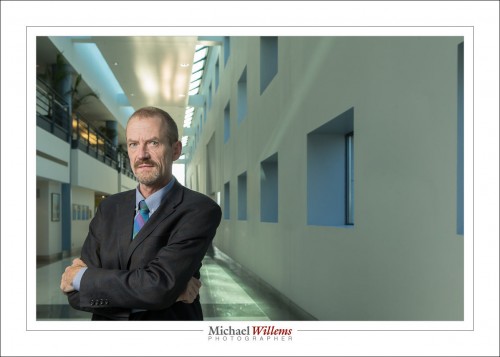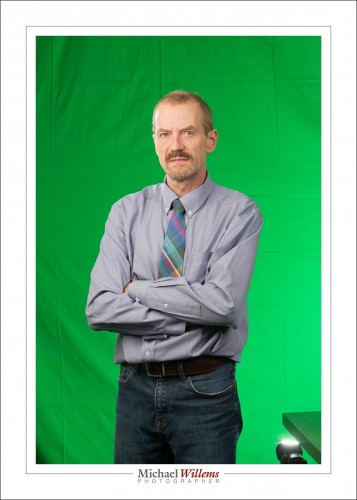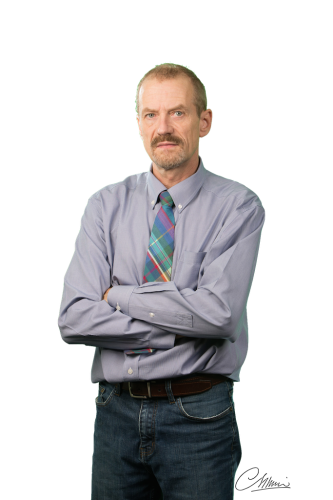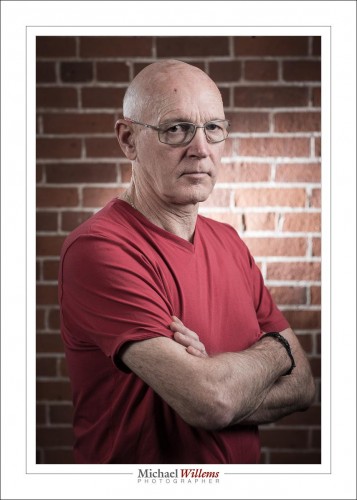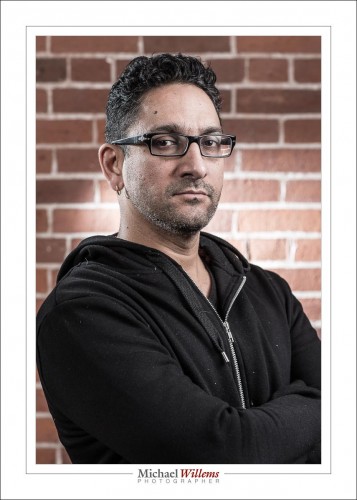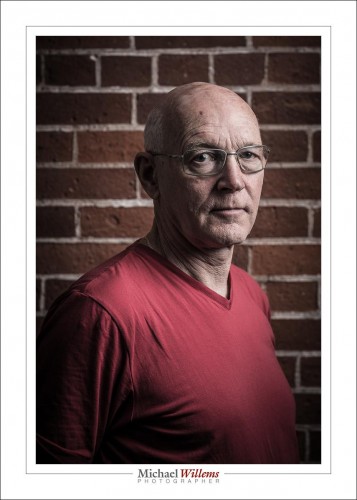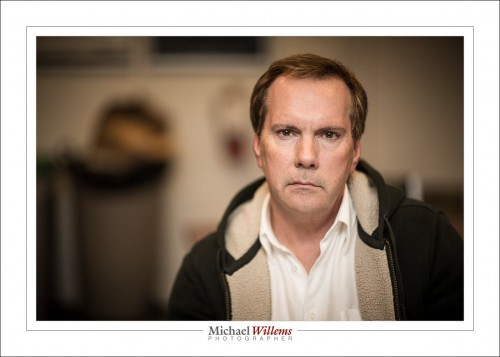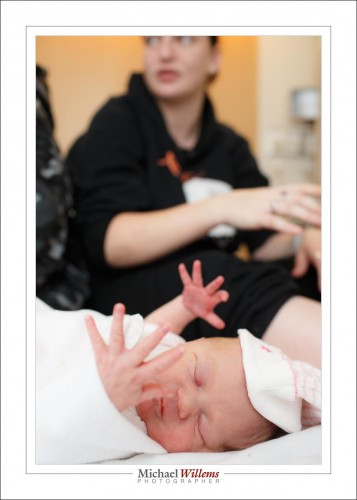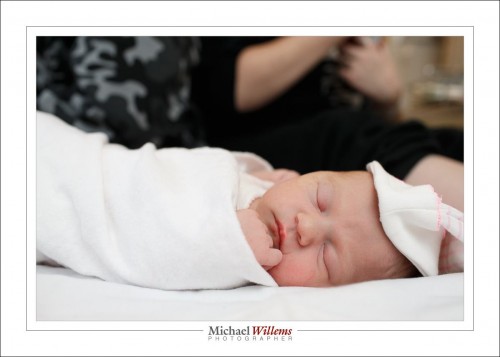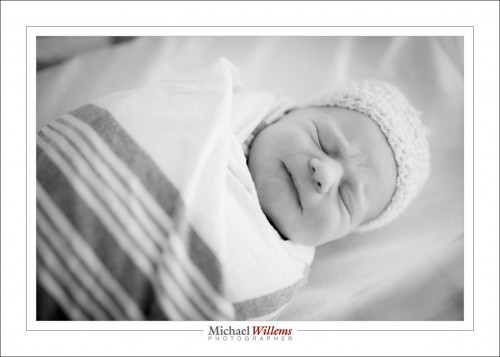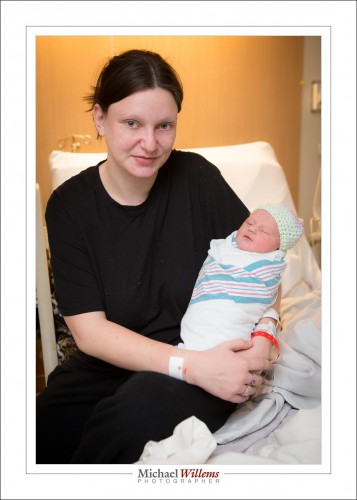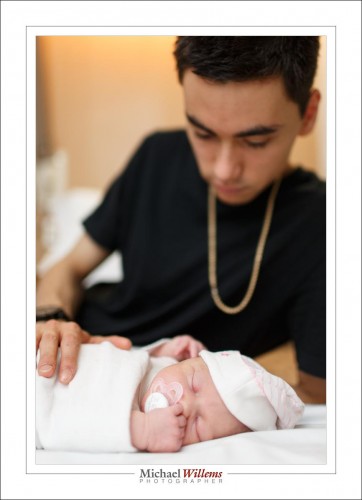You have seen me talk about this many, many times. Flash pictures start with the background, And to get light into the background, often you will want to use slower shutter speeds. These affect ONLY the background, not the flash part of the photo. Look here; an example from the course I taught today at Vistek:
Like here. f/8, 200 ISO, 35mm prime lens, flash on manual on 1/4 power, fired through an umbrella. The only thing I will change is the shutter speed.
1/125 sec:
1/30 sec:
1/15 sec:
You see? The background gets brighter, the women in the front, who are lit primarily by the flash, do not change. Analyze that carefully.
- The woman on the left: lit by flash, so does not change.
- The store in the background: lit by ambient, so changes with every shutter speed change.
And that is how the cookie crumbles.
Why did I use manual flash power setting? Because it is consistent. The same for every shot. No variation. Once I have it right, it’s right for every shot.
___
See http://learning.photography/collections/books for my collection of e-books. These contain my collected knowledge, both of photography and of how to teach it. They are all 100-200 pages long and are simply PDFs, so you can put them on all your computers and tables and large-screen phones, for convenient reading and reference. Enjoy!

